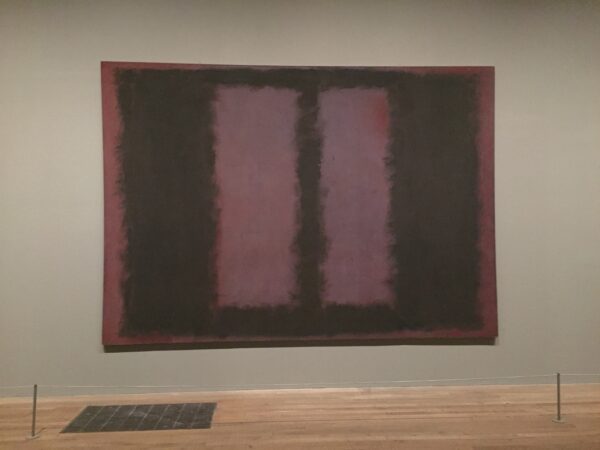AMSTERDAM, NETHERLANDS – Gasps of disbelief rippled through the art world today as news broke of an extraordinary incident at Amsterdam’s Stedelijk Museum: a young child, reportedly on a family visit, allegedly defaced a multi-million euro painting by abstract expressionist master Mark Rothko. The damage to the artwork, titled “Black on Maroon” and valued at an estimated €50 million, is currently being assessed by conservation experts, but initial reports suggest a significant and potentially irreparable mark across the canvas.
The incident reportedly occurred on Sunday afternoon in a gallery housing the museum’s renowned collection of 20th-century art. According to eyewitness accounts, the child, believed to be around five years old, managed to breach a safety barrier and, using a crayon or marker, drew a line or shape on the surface of the large-scale Rothko painting.
Museum staff reacted swiftly, but the damage was already done. The artwork, a signature piece from Rothko’s powerful and emotionally resonant mature period, is characterized by its large fields of layered color. Any intrusion on this carefully constructed surface is considered a serious act of vandalism.
“We can confirm that an incident occurred yesterday involving a painting by Mark Rothko,” a spokesperson for the Stedelijk Museum stated in a press release issued this morning. “The artwork has been taken out of public view and is currently being examined by our restoration team. We are also reviewing our security protocols to understand how this could have happened.”

While the museum has not yet detailed the extent of the damage, art conservation experts contacted by this publication expressed grave concern. Rothko’s layered paint surfaces are notoriously delicate, and any attempt to remove markings could potentially cause further damage to the original pigment and the painting’s overall integrity.
“A Rothko is not like a canvas with a single layer of paint,” explained Dr. Iris van den Berg, a leading art conservator based in The Hague. “The subtle variations in color and texture are crucial to its impact. Any foreign material, and especially attempts to remove it, can have devastating consequences.”
The potential €50 million valuation of “Black on Maroon” underscores the magnitude of the loss, both financially and culturally. The work is considered a significant example of Rothko’s exploration of color and emotion, inviting viewers into a contemplative space through its abstract forms.
Questions are now being raised about security measures within the Stedelijk Museum, particularly regarding the proximity of visitors, including young children, to such valuable artworks. While museums strive to make art accessible, the incident will likely reignite debates about the balance between public engagement and the protection of fragile masterpieces.
The parents or guardians of the child involved have not yet been publicly identified. It remains unclear whether they will face any legal repercussions for the damage caused. Legal experts suggest that liability could depend on factors such as the museum’s safety protocols and the level of supervision provided to the child.
As the Stedelijk Museum’s conservation team meticulously assesses the damage and explores potential restoration options, the art world holds its breath. The image of a child’s innocent scribble potentially scarring a multi-million euro Rothko serves as a stark and unsettling reminder of the vulnerability of even the most revered artworks. The tiny hands involved in this monumental mishap have inadvertently created a major headache for the Dutch museum and a sobering lesson for art institutions worldwide.
